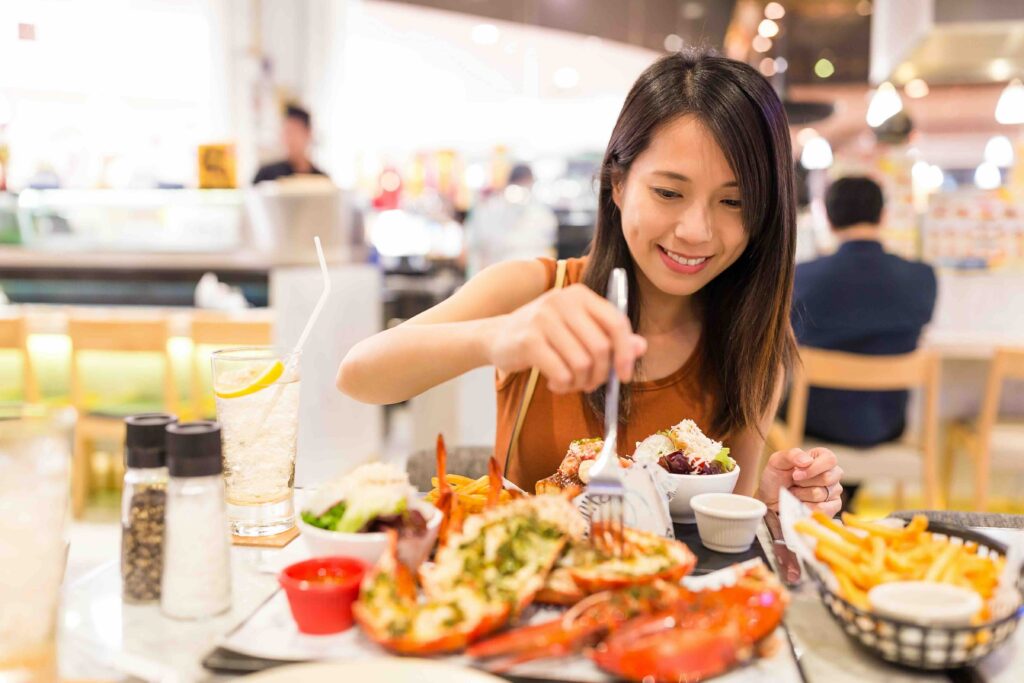There’s nothing that ruins a dream vacation faster than spending it confined to your hotel bathroom. Food poisoning while traveling is not only uncomfortable but can also disrupt carefully planned itineraries and create lasting negative memories. The good news? With proper knowledge and precautions, most food-related illnesses during travel can be prevented. In 2025, with global travel continuing to expand, understanding how to eat safely abroad has never been more important.
Water Safety: Your First Line of Defense
Water safety remains the foundation of preventing travel illness in 2025. Contaminated water is still one of the leading causes of traveler’s diarrhea and other gastrointestinal issues worldwide.
- Stick to bottled water – Always check that the seal is intact when purchasing
- Be cautious with ice cubes – Remember that ice is typically made from local tap water
- Brush teeth with bottled water – In regions with unsafe tap water, use bottled water for all oral hygiene
- Consider water purification options – Modern portable UV purifiers and water bottles with built-in filters have become incredibly effective and convenient for 2025 travelers
Many travelers now use water safety apps that provide real-time information about water quality in various destinations. These technological solutions have significantly improved access to safe drinking water information.
Navigating Street Food Safely
Contrary to popular belief, street food can sometimes be safer than restaurant food, especially in 2025 when street food cultures have continued to evolve and adapt to tourism. The key is knowing what to look for:
Signs of a Safe Street Food Vendor
- Popularity matters – Busy stalls with high turnover ensure fresher ingredients
- Watch the cooking process – Food prepared fresh before your eyes is generally safer
- Observe hygiene practices – Clean hands, surfaces, and separate handling of raw and cooked foods
- Check cooking temperatures – Food should be cooked thoroughly at high temperatures
Food tour apps like GetYourGuide and Klook now offer curated street food experiences led by local experts who know which vendors maintain the highest safety standards.
Smart Restaurant Selection
Technology has transformed how travelers find safe dining options in 2025. Restaurant review platforms have become increasingly sophisticated, with specialized filters for hygiene ratings and food safety information.
Useful apps for finding safer restaurants include:
- TripAdvisor – Now featuring enhanced hygiene badges and safety certifications
- Google Reviews – Includes real-time crowdsourced health and safety information
- Local food apps – Many destinations have developed specialized apps for tourists with safety ratings
When physically assessing a restaurant, look for these safety indicators:
- Clean dining areas and visible kitchen (when possible)
- Staff following proper hygiene practices, including wearing gloves or using serving utensils
- Proper temperature maintenance (hot foods served hot, cold foods properly refrigerated)
- A busy dining room with satisfied customers
Many accommodations booked through Booking.com or Agoda now include restaurant safety information in their local recommendations.
Temperature and Storage Concerns
Food temperature remains a critical factor in preventing foodborne illness:
High-Risk Situations to Avoid
- Buffets with lukewarm food – Especially those without proper heating elements or cooling mechanisms
- Foods sitting at room temperature – The “danger zone” (40°F-140°F or 4°C-60°C) allows rapid bacterial growth
- Dairy products without proper refrigeration – Particularly in hot climates
- Undercooked eggs, meat, or seafood – These require thorough cooking to eliminate harmful bacteria
In 2025, some travelers are utilizing portable food thermometers that connect to smartphones to verify safe cooking temperatures – especially useful for those with compromised immune systems or who are traveling with young children.
Fruits and Vegetables: The “Peel It, Cook It, or Leave It” Rule
Fresh produce offers essential nutrition during travel but requires careful handling:
- Select fruits with intact peels – Bananas, oranges, and mangoes that you peel yourself are generally safer
- Be cautious with pre-cut fruits – These may have been washed in local water or handled unsafely
- Thoroughly wash produce – Use bottled water or food-safe sanitizing solutions
- Consider portable produce wash sprays – These have become popular travel accessories in 2025
For vegans and vegetarians who rely heavily on produce while traveling, modern food sanitizing devices that use UV technology have become increasingly compact and affordable options for ensuring safer salads and raw vegetables.
Emergency Preparedness: Better Safe Than Sorry
Despite best efforts, illness can still occur. A well-prepared traveler in 2025 should have:
Essential Travel Health Kit
- Over-the-counter medications for diarrhea, nausea, and stomach discomfort
- Oral rehydration salts or electrolyte tablets
- Probiotics specifically formulated for travel
- Digital thermometer
- Comprehensive travel insurance with medical coverage
Digital health services have expanded significantly in 2025, with many SafetyWing insurance plans now including 24/7 virtual doctor consultations and location-based emergency service information. The ability to consult with healthcare professionals remotely has transformed how travelers handle minor health concerns.
Before traveling, research local emergency numbers and identify reputable medical facilities near your accommodation. Many travel apps now automatically download this information when you book your trip.
Cultural Awareness and Adaptation
Food safety varies significantly across cultures, and what’s considered safe in one destination might be risky in another. In 2025, cultural food safety awareness has become an important part of travel preparation:
- Research specific food safety concerns for your destination
- Understand that your body may need time to adapt to different bacterial environments
- Start cautiously with new cuisines and gradually explore more adventurous options
- Consider taking destination-specific probiotics before and during travel
Many travelers use international banking apps like Wise or Revolut that now include travel advice sections with localized food safety guidance.
Key Takeaways for Safe Eating While Traveling in 2025
As global travel continues to evolve in 2025, these core principles remain essential for preventing food poisoning:
- Prioritize water safety and be cautious with beverages
- Choose busy, popular food establishments with high turnover
- Ensure proper cooking temperatures for all foods, especially proteins
- Follow the “peel it, cook it, or leave it” rule for fruits and vegetables
- Carry a basic medical kit and know how to access healthcare at your destination
- Use technology resources to find safer eating options
- Consider destination-specific food safety concerns
With these precautions in mind, you can explore global cuisines with confidence, turning your culinary adventures into memorable highlights rather than health hazards. Remember that being cautious doesn’t mean missing out on authentic food experiences – it simply means enjoying them safely.


